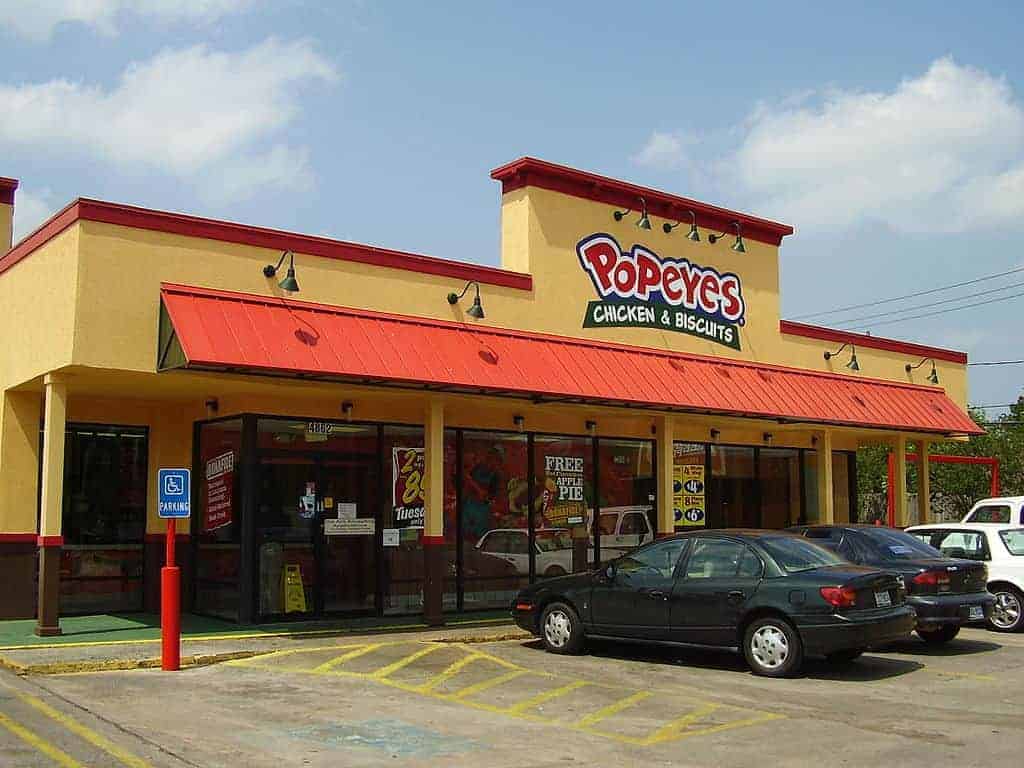In February, Restaurant Brands International Inc. (TSX:QSR)(NYSE:QSR) announced that it was acquiring Popeyes Louisiana Kitchen for US$1.8 billion. With the acquisition completed in March, we’ll soon begin to see the benefits of the deal. But in many respects, this deal was just as important, if not more important, for the company than the acquisition of Tim Hortons.
Here’s why…
Chicken accounts for 10% of the total fast-food market. The largest chicken brand in the space is KFC, which is owned by Yum! Brands, Inc. (NYSE:YUM). All told, there are 21,000 KFC locations, so it accounts for much of the chicken business. However, Popeyes is the second-largest chicken player, and yet it only has 2,700 global locations.
With the chicken space rapidly growing for numerous reasons, including the cost for chicken versus beef, the growth prospects for the Popeyes brand are quite lucrative. And the good news is that Restaurant Brands excels at growth. To understand how Restaurant Brands can help, let’s look at how Burger King has done.
Back in 2010, Burger King was only launching about 150 units a year. There was growth, but it wasn’t massive. Then the acquisition happened. Now, the Burger King brand is opening more than 700 restaurants every single year, expanding aggressively around the world.
The way it’s achieved this is through the master franchise joint venture (MFJV) model. Essentially, it picks one partner in a particular country or region and then launches a joint venture with that partner. Getting one dedicated partner to open multiple stores allows Restaurant Brands to scale out its supply chain. So far, this model has worked wonders.
In July 2016, Restaurant Brands launched TH Coffee Services Philippines Corporation. Some analysts predict there will be hundreds of Tim Hortons in the next few years; the first one opened back in February. In January 2017, Restaurant Brands launched another MFJV targeting Mexico — its first entry into the Latin American market.
This strategy helped Burger King expand into Brazil from 150 stores in 2011 to over 500 today. In China, there were fewer than 90 restaurants, and now there are over 650. And finally, Russia has seen growth from fewer than 90 in 2012 to over 350.
My expectation is that this strategy will be used again for Popeyes to much success. In 2016, before it was acquired, Popeyes opened 149 new stores globally (sounds similar to what Burger King did before acquisition). In a few years, I see little reason why there can be hundreds of new Popeyes popping up every year, which would push significant growth for the company.
Restaurant Brands focuses the bulk of its growth through acquisitions. One area I believe Restaurant Brands will target next is the pizza business. According to Pizza Magazine, the world pizza market is US$128 billion with US$44 billion in the United States alone. Papa John’s Int’l, Inc. (NASDAQ:PZZA), with its US$2.83 billion market cap and +4,000 international locations could be another appealing takeover opportunity.
All of this aside, we have to ask ourselves if Restaurant Brands is a worthy investment. On the surface, it’s really not because it currently trades at 82.67 times its earnings. However, this is a growth stock, and expectations are strong. If Popeyes can scale like Burger King did, and if Restaurant Brands can acquire other brands, this company could have significant growth coming.









